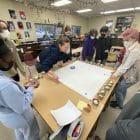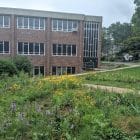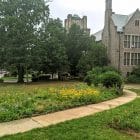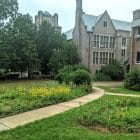Columbia High School students recently designed and planted a wildflower garden, under the guidance of teacher and Horticulture Club advisor, Amy Biasucci. Here are excerpts, edited for length, from Biasucci’s story of how the garden came to be:
“At the beginning of the 2021-2022 school year, several CHS students independently approached me because they heard I was the advisor of the Horticulture Club prior to the pandemic and school closings. After the trials and exhaustion of the virtual school year, I really had no intention of resurrecting this particular club, but I was struck by the sheer enthusiasm and number of students wishing to learn to garden and to care for plants. Maybe it was indeed time to prepare the soil of a new season, sow seeds of hope, and nurture new life at school.
I reached out to the SOMA Gardening and the Buy Nothing communities on Facebook to ask for donations of gardening tools, soil, seeds, gloves; really anything people were willing to give. The generosity of these groups was overwhelming and soon we were receiving giant bags of soil, live plants, packets of seeds, brand new bunches of gardening gloves, trowels, shovels, and most importantly, community members volunteering their time and knowledge. Our club was up and running!
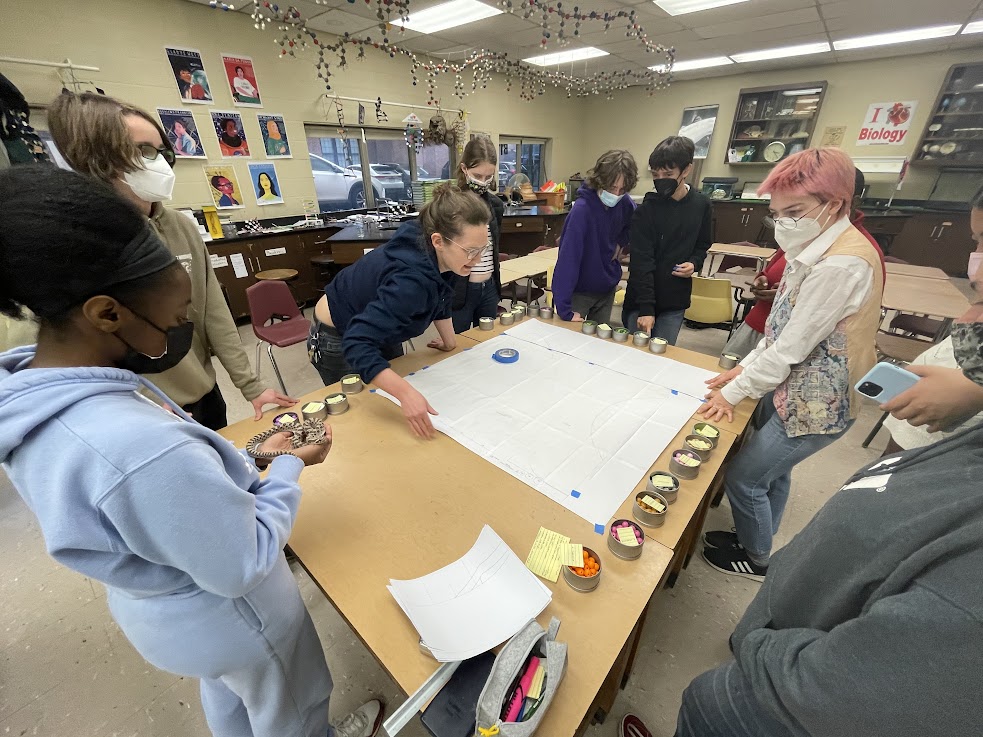
CHS students planning their wildflower garden
I also received a message from one of my down-the-street neighbors, Tekla Pontius-Courtney… a 2005 alumnus of Columbia High School who went on to earn a Bachelor of Science in Botany at The University of Toronto. She then received a Masters of Landscape Architecture from Rutgers University and is currently a local landscape designer. Tekla proposed a magnificent project for the club, now called the CHS Gardening Club. She offered her expertise, time, energy, and over a thousand baby plants to build a regenerative and functionally diverse wildflower garden that would support pollinating insects, birds, and other wildlife, as well as promote healthy soil formation. The garden would also be designed to be aesthetically pleasing and welcoming to students, staff, and community members because of the intentional pattern of flower colors, plant heights, and varied natural textures. The club said yes!
We embarked on a winter long set of planning sessions. Tekla brought landscape architectural planning sheets on which the front lawn of CHS was drawn to scale. She taught the Garden Club students to conceptualize and design a garden habitat with properly scaled measurements and tools, use correct scientific names of plants, place plants depending on the flowering season of each, and understand symbiotic relationships that would occur between each species. The club members were able to use carefully painted wooden beads representing flower color to create a physical model of our future garden.
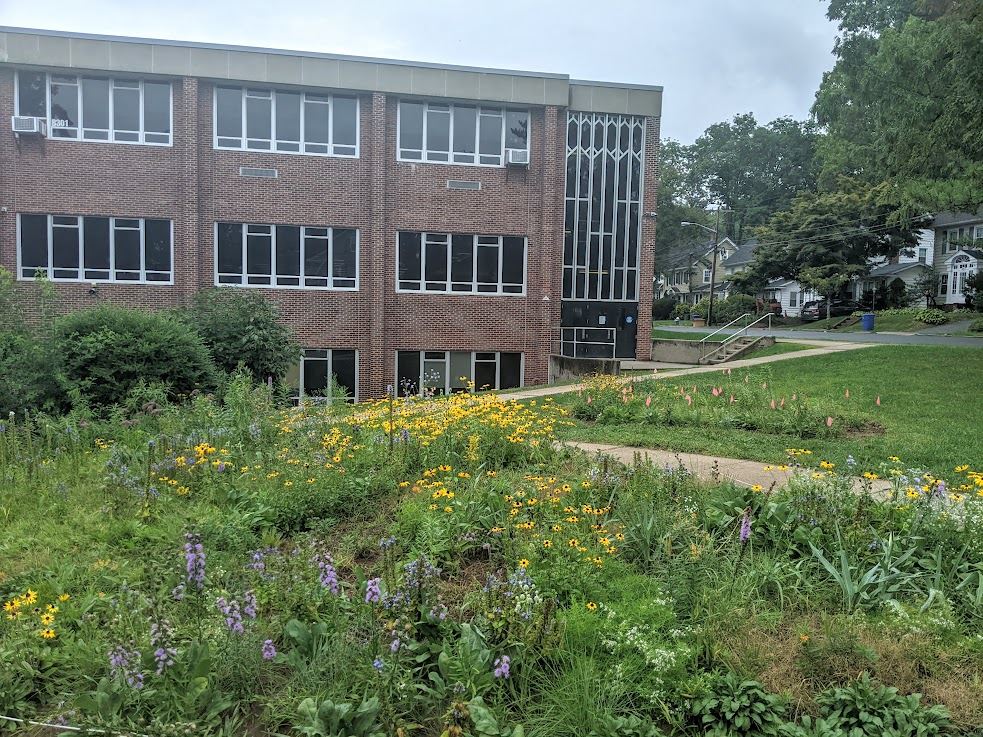
CHS Wildflower garden
Principal Mr. Frank Sanchez championed our ideas and the full and detailed plan won Board of Education approval.
By May it was time to get our hands dirty. The first, and biggest, job was the removal of 650 square feet of sod. This was an “all hands on deck” kind of mission and I had to convince teenagers in springtime to dig up grass under a blazing sun. …The Environmental Science class was also instrumental in breaking ground during class time. By the weekend, we had all made a big dent in the work needed to be done, but were far from finished. Word got out about our project, and on a Saturday and Sunday in late May we had a wonderful gathering of students pitching in and getting really really muddy. The MAC (Minority Achievement Committee) Scholars were out in force and Garden Club and CHS Environmental Club students brought their friends. Passers by wondered what was going on, and then returned to dig in! The Child Study Team referred students who were ready and willing to work hard. It became a wonderful community of kids, who didn’t necessarily know each other, working together, learning about each other as well as the importance of habitat restoration. The students organized themselves into teams: the wheelbarrow crew, the sod removal crew, the soil preparation team, and the planters. We had music, too!
Since so many students came to help and worked for hours and hours, we were ready to begin planting two weeks sooner than anticipated! Neither Tekla nor I could believe this was happening so fast and so smoothly.
One of the most rewarding aspects of being an educator is getting to witness first hand how students express their thoughts. I was watching a group of students, each from a different club, introduce themselves to each other and chat while they dug up clumps of sod and reclaimed the soil. As they examined each tiny critter they found in the soil they asked questions about each others’ lives and experiences and looked to me for answers about the insects and larvae. They were planting their own seeds of compassion and community and reaping a harvest of knowledge and rewards; physical, emotional, and intellectual. Each student was taught how to handle, prepare, and plant the plugs, or young plants. As they continued to work, one student paused, looked around, and sighed “I really can’t wait to watch this garden grow!”
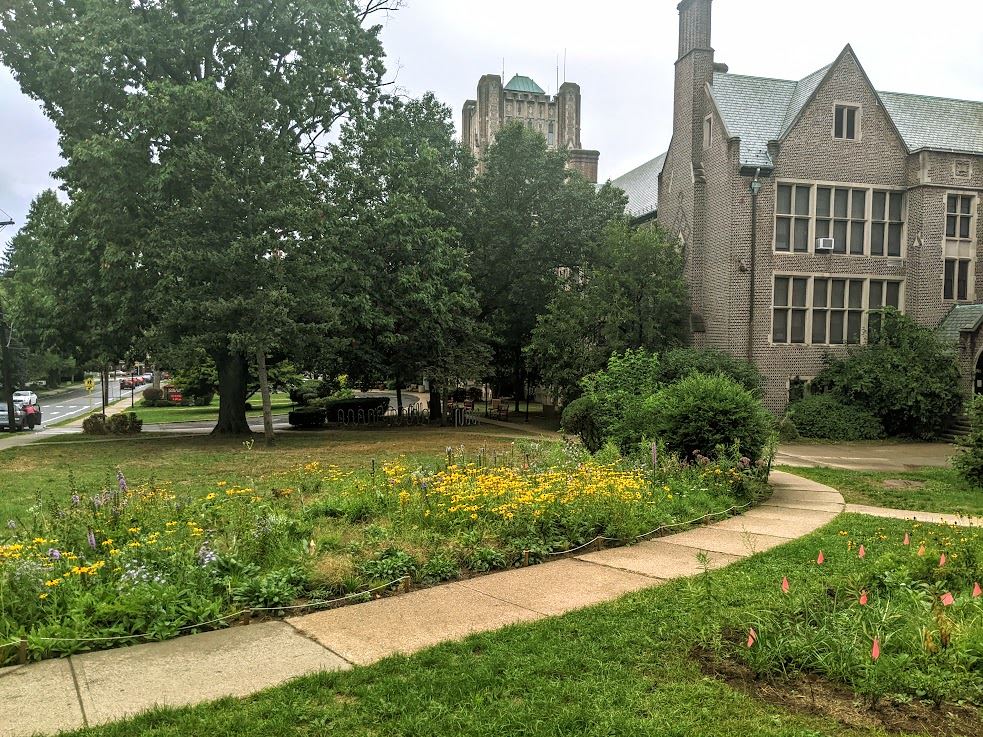
CHS wildflower garden
Those are the moments that put everything into perspective. These students are now part of a legacy. The Columbia High School Wildflower Garden will nurture them for their remaining years here as well as all the future generations coming up behind them. The students will nurture and tend to the garden. The wildflowers will also support vital insect populations that the earth desperately needs to survive. Looking forward, this garden will grow along with our students and it will be a model of sustainability in suburban landscapes. We plan on using the garden as a teaching resource not only for biology and environmental science classes, but for students of fine arts, architecture and design, literature, math, and so many more areas of study. Countless students stopped by to ask what we were up to and so began many organic teachable moments about concepts like pollination, coevolution, sustainability, loamy soil, and regenerative agriculture, grubs, worms, butterflies, and of course, the birds and the bees.
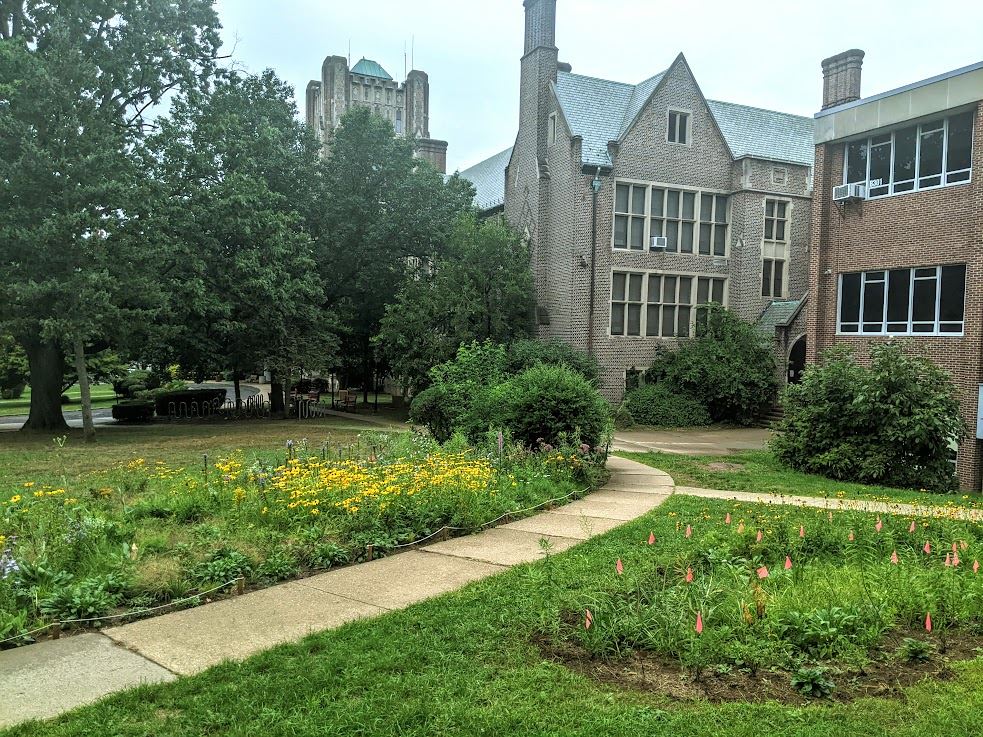
CHS wildflower garden
We also want the garden to be a resource for community members interested in converting lawns, aka ecological deserts, to functional habitats. There will be endless possibilities for learning because of our garden and we hope the roots that were set down this year will sustain and promote the growth of restorative garden practices throughout our towns…
I would just like to acknowledge a few other community members and gardeners in addition to Tekla who helped the Garden Club take form by attending meetings, donating seeds and plants from their own gardens, teaching winter sowing techniques, connecting us to the online gardening community and always being a source of support, encouragement and skill. They are Jessica Miller, Jean Ng-Gilio, Catherine Cronin, and Joy Yagid. I also wanted to acknowledge a student, Claude Michaud who diligently watered the garden all summer long.
If you know students, staff, or community members who would like to get involved with the CHS Wildflower Garden, the Gardening Club, or the Environmental Club, or if you are a staff member who would like to bring your classes to the garden please send a note to Amy Biasucci [email protected]. And please, come visit the garden!”

